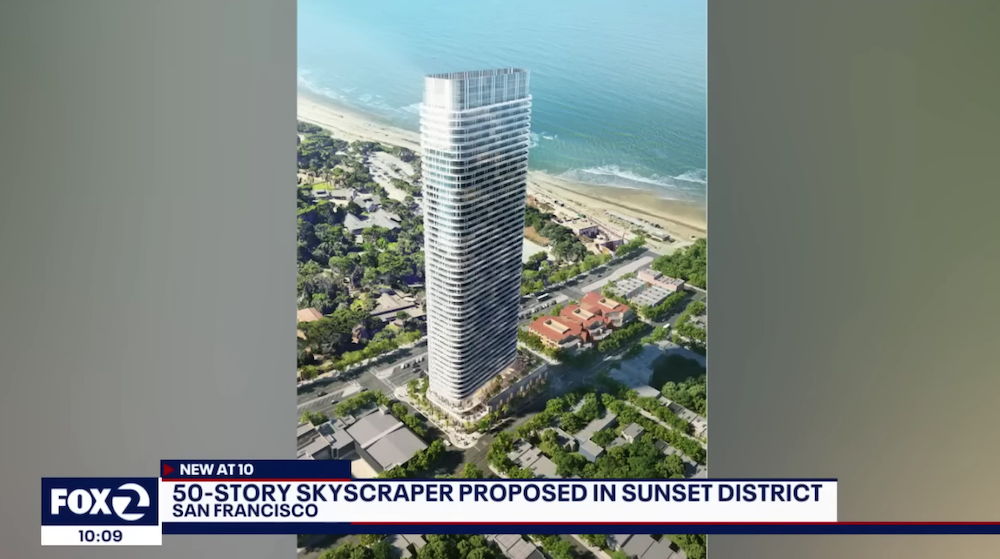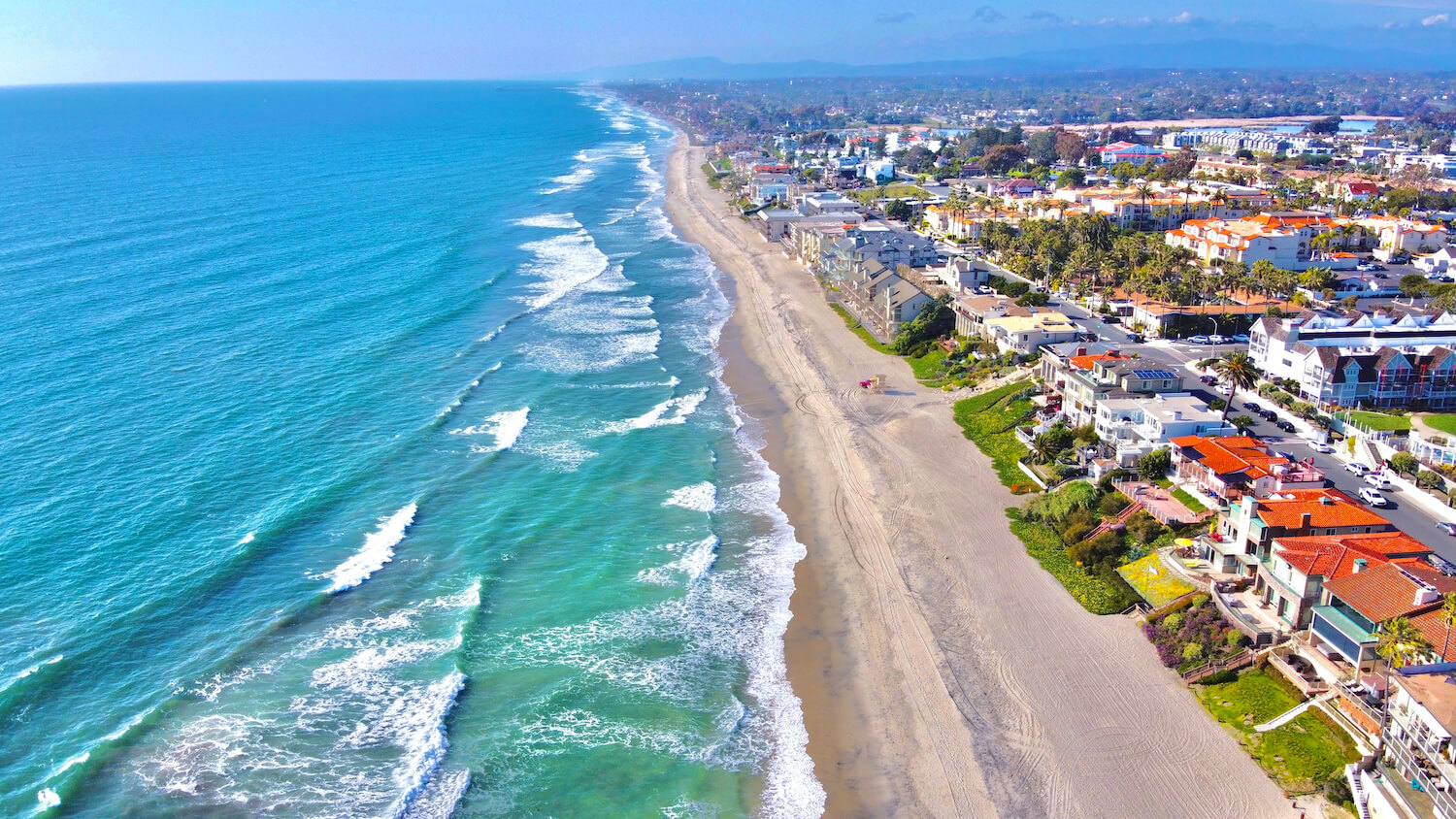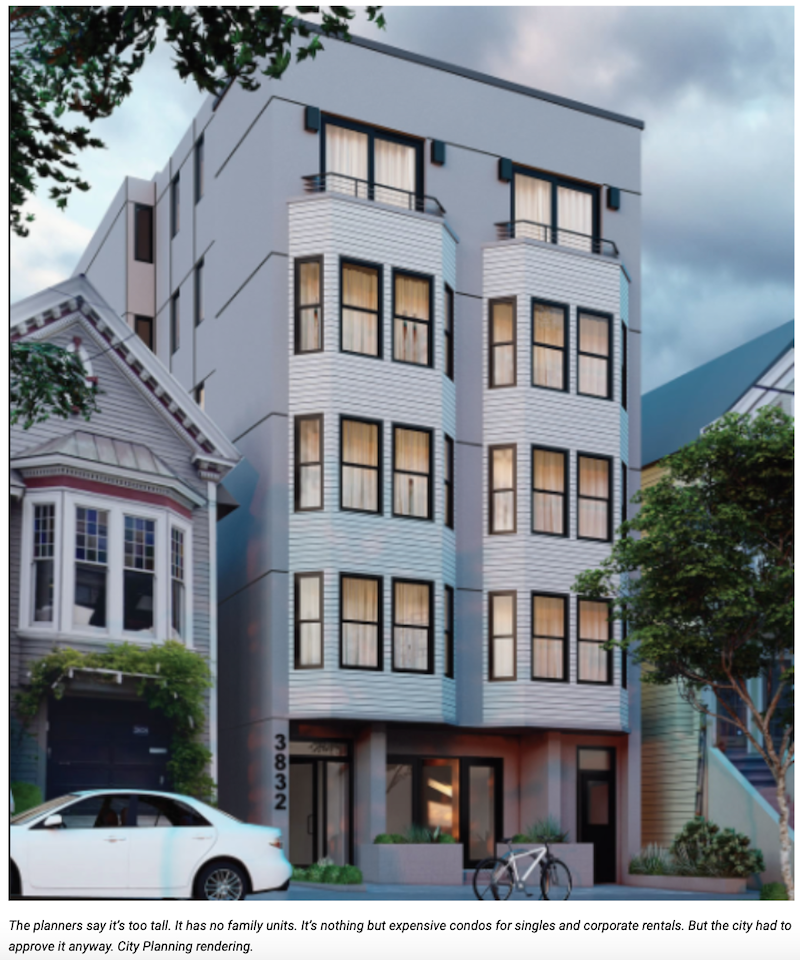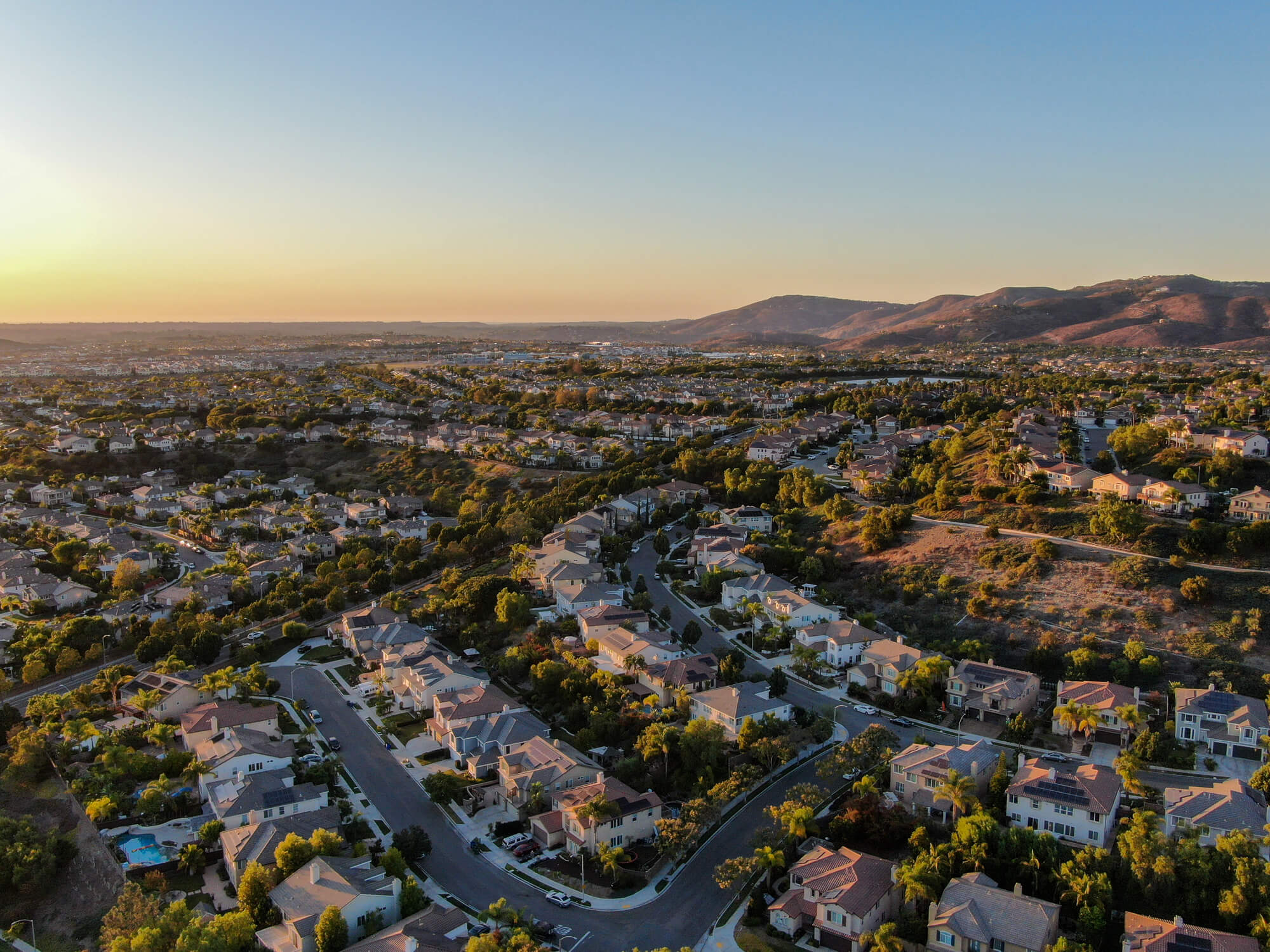Note from Our Neighborhood Voices: First Scott Wiener came for your neighborhood – now he is coming for California’s sensitive coastlines. Help us fightback by signing up using the form at the bottom of this page.
This article originally appeared in CalMatters.
California lawmakers have been busy over the last decade trying to make it easier to build homes across a housing-strapped state. But there’s an 840-mile-long exception.
In an undulating band that generally runs 1,000 yards from the shoreline, the 12 members of the California Coastal Commission have the final say over what gets built, where and how.
Voters empowered the commission to protect the state’s iconic beaches in 1972, responding to a crisis of despoiled seas and the prospect of the Miami-fication of the California coast.
But five decades later, the state faces a different crisis as millions of Californians struggle to find an affordable place to call home. Now, a growing number of legislators and housing advocates are trying to wrest away some of the commission’s power.
Legislation by San Francisco Democratic Sen. Scott Wiener would fast-track apartment development in parts of the state that haven’t met their state-set housing goals, exempting them from lengthy public hearings and environmental legal challenges. The coast is no exception, effectively cutting the Coastal Commission out of the process.
Commission members, staff and environmental advocates say the bill may be the most direct assault yet at the agency’s voter-backed mandate.
“Once you start exempting classes of development from the Coastal Act there will be no shutting that barn door,” said Sarah Christie, a lobbyist for the commission. “You’re going to lose some of the best things about California.”
And as rising seas threaten to bring down bluffs and flood beachfront neighborhoods, coastal advocates argue that carefully considered development is more important than ever.
Wiener and his allies reject the argument that the commission is the only thing standing in the way of a development free-for-all, since current zoning rules and environmental protection laws would still apply. Ending what has become the regular practice of exempting the coast from California’s most aggressive pro-housing development laws is also fair, they argue. California’s beachfront happens to be home to some of the state’s richest residents.
“The coastal zone is much whiter and wealthier than the rest of the state,” Wiener noted at a recent Assembly committee hearing. “The idea we would be applying state housing law inland…while we literally exempt whiter, wealthier coastal communities is offensive to me.”
Wiener said he plans to introduce tweaks to the bill before its next hearing on July 10 in an effort to “compromise” with the commission. But the two sides remain far apart.
“The idea we would be applying state housing law inland…while we literally exempt whiter, wealthier coastal communities is offensive to me.” – State Sen. Scott Wiener, Democrat from San Francisco
The tension between the state’s aggressive housing goals and its longstanding commitment to coastal preservation is particularly acute in Southern California, where the latest round of state housing goals shifted the bulk of the region’s planned growth from inland communities — the traditional, sprawling outlets for pent up housing demand — to coastal ones. That includes cities like Santa Monica, Malibu, Los Angeles, Encinitas and San Diego, all of which fall at least in part, if not entirely, within the coastal zone.
“If you have the Coastal Commission, with their ‘less is more’ mindset saying, ‘no, you can’t build here’…how are cities even supposed to attempt to achieve meeting that (housing) goal?” said Elizabeth Hansburg, executive director of People For Housing, a pro-housing advocacy group in Orange County.
Christopher Pederson, who served as chief counsel for the commission before retiring in 2018, said it’s possible for the state to build up the coast while maintaining “really strong protections” in undeveloped coastal land and for delicate ecosystems. In fact, he said, if the alternative to building in dense coastal cities is encouraging car-oriented sprawl in the exurbs, the two goals may necessarily go hand in hand.
“From an environmental perspective, from a climate policy perspective, from a housing perspective and from a transportation perspective, I think it makes a lot of sense to encourage more multifamily housing in the coastal zone,” said Pederson.
Will the Coastal Commission hold the line?
This isn’t the first time the Legislature has taken a crack at the Coastal Commission’s authority. It’s not even the first time this year.
San Diego Assemblymember David Alvarez, a Democrat, introduced a bill in February that would encourage developers to set aside units for lower income residents by allowing them to build higher and denser projects. The bill builds on past “density bonus” policies that have made their way through the Legislature. But unlike its predecessors — and unlike some of the most significant housing bills in recent years, including one that allows the construction of duplexes in areas zoned for single family homes across the state — Alvarez’s bill explicitly went out of its way to include the coastal zone.
Then, in April, the bill reached the Assembly Natural Resources Committee and a coastal exception was added back in.
Chair Luz Rivas of Arleta, and other Democrats including Gail Pellerin of Santa Cruz and Dawn Addis of San Luis Obispo, made clear at the hearing that overriding the commission was a no-go.
Alvarez accepted the change rather than see his bill die. But he was visibly frustrated.
“I heard a statement that coastal access is important and that people should have the opportunity to visit the coast,” he said, referring to one of the commission’s key mandates to keep California beaches open to the public. “People should also have the opportunity to live on the coast, not just visit the coast.”
“The ocean is coming”
So far Wiener’s bill has not met the same fate, though it goes before the same committee later this month. His bill also, arguably, represents a bigger challenge to the commission’s authority.
In most of the state’s cities and counties, proposed multiplexes and apartment projects are allowed to skirt lengthy public approval processes. Instead they get automatic approval as long as they check the right boxes — among them, offering a certain share of units at below-market rents or prices and abiding by stricter labor standards.
But the Coastal Commission doesn’t do box checking.
Along much of the coast, the commission has to approve city growth and zoning plans. In neighborhoods especially close to the water, foes of proposed developments can appeal directly to the commission.
And in cities that haven’t come up with their own coastal protection plans, which includes about a quarter of coastal cities including Los Angeles, the Coastal Commission enforces the law alone, armed only with the Coastal Act. And the act itself is fairly light on specifics.
That’s for good reason, said Christie, the commission lobbyist.
Ensuring that a proposed development is built “far enough away from an eroding bluff that it’s not going to fall into the ocean in 20 years, there is no objective standard that can speak to that complexity,” she said.
“It’s going to be a managed retreat or an unmanaged retreat because the ocean is coming and nature bats last.” – Sarah Christie, Lobbyist for the Coastal Commission
Climate change and rising sea levels add yet another level of complexity and another reason not to rush development, she added.
“The last thing that California should be doing is concentrating more new development in these hazardous flood-prone areas,” she said. “It’s going to be a managed retreat or an unmanaged retreat because the ocean is coming and nature bats last.”
That view is shared by all 12 members of the commission, who are appointed by the governor or the Legislature.
“We take a lot of time and effort in evaluating each and every project that comes before us,” said Commissioner Dayna Bochco during a June 7 hearing. “You can’t just make a mathematical formula as to what works in any given project on the coast.”
The commission voted unanimously to oppose Wiener’s bill.
Must fit plans for California coast
The bill does include its own set of checks on which projects get the red-carpet treatment and which get closer review.
In order to receive the fast-tracked approval process, the land in question already has to be zoned by local governments for housing. A proposed building has to have pre-existing “urban” development on at least three of its four sides.
According to estimates put together by California YIMBY, a pro-housing development organization that supports the bill, of the nearly 1.5 million acres within the coastal zone, the bill would allow for streamlined development on just 277,160 acres. The vast majority of the land — wetlands, floodplains, beaches and river channels — either are explicitly exempted from the bill or aren’t zoned for housing by locals.
“Approximately 85% of the Coastal Zone is already excluded from the bill. The remaining 15% are existing urbanized, developed communities,” Wiener said in a written statement. He added that the state “can’t afford to continue excluding these areas if we are to meet our climate goals — the lack of housing in coastal zones these exclusions produce already means coastal workers have to drive 10% more on average than their inland counterparts.”
Wiener and his allies also reject the idea that proper planning for rising oceans requires detailed, site-by-site analysis. The senator’s office pointed to voluntary planning guidelines produced by the San Francisco Bay Conservation and Development Commission and San Mateo County Flood Control District. The San Mateo County planning document builds on nationwide flood risk mapping from the Federal Emergency Management Agency.
Though his office has yet to provide details, Wiener said his proposed compromise language to the Coastal Commission includes preserving the current discretionary review process for the most at-risk slivers of the coast and adding specific “objective development standards” around rising sea levels.
Not that anyone can say with certainty how much shore the sea is likely to swallow across the entire coast in the coming decades.
“Everybody admits that it’s not a hard science, it’s probabilities,” said Joseph Smith, a land-use consultant for California Coastal Works who advises developers and governments navigating the Coastal Act. “But if it is absolutely important to get housing into the coastal zone, then yes, you could pick a number.”
Building a California coast for all
The commission and its defenders say pro-housing advocates and legislators are picking on the wrong enemy.
For the first decade of its life, the Coastal Commission was empowered to make the construction of affordable housing a condition of its approval of residential projects. In 1981, the Legislature took that power away over the commission’s objections.
Revoking that power will “make sure that the ability to live near the coast is reserved for the wealthy,” then-Chairman Lenard Grote warned at a legislative hearing at the time.
Susan Jordan, founder of the nonprofit California Coastal Protection Network, is a familiar face at the state’s public hearings, where she regularly challenges oceanside projects for violations of the Coastal Act. A recent win: the Poseidon Water desalination project in Huntington Beach, which the Coastal Commission rejected last year.
“The Legislature ‘broke’ it and now it needs to ‘fix’ it,” Jordan said in a statement.
The commission’s supporters regularly stress that it has never rejected a proposed affordable housing project.
But for many developers — including those who build deed-restricted units for lower-income residents — the possibility of years of delay with no certain outcome has created a “chilling effect,” said Jeannette Temple, a San Diego land use consultant.
“If you’re an affordable housing developer, you’re already operating on the margins, so most of the time my clients, and people my clients know, don’t even look in the coastal zone,” she said. “In my opinion it’s just another kind of redlining.”









